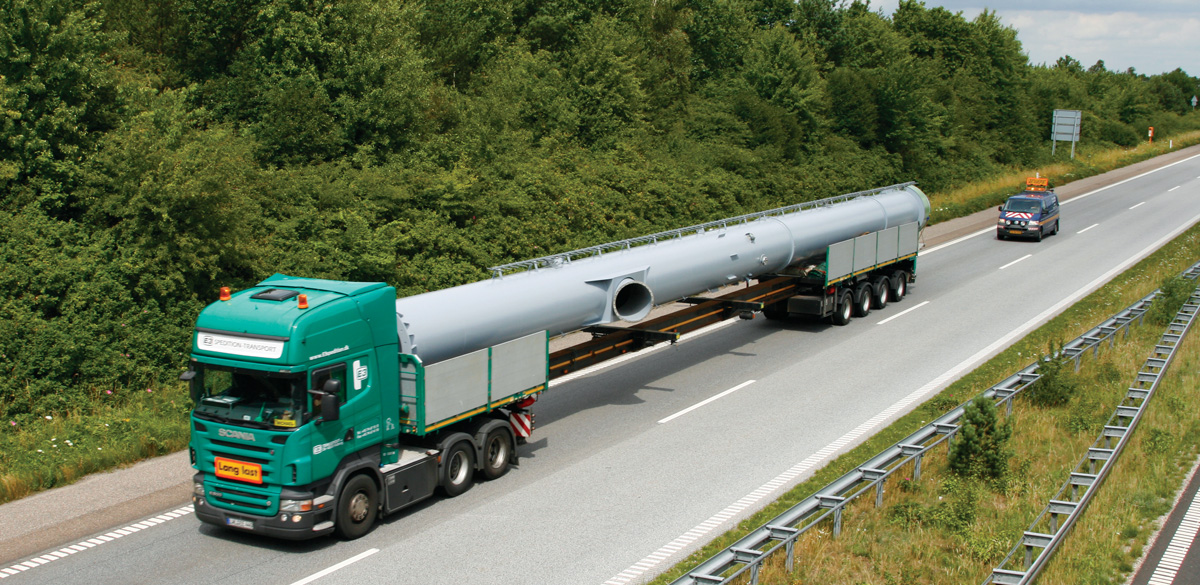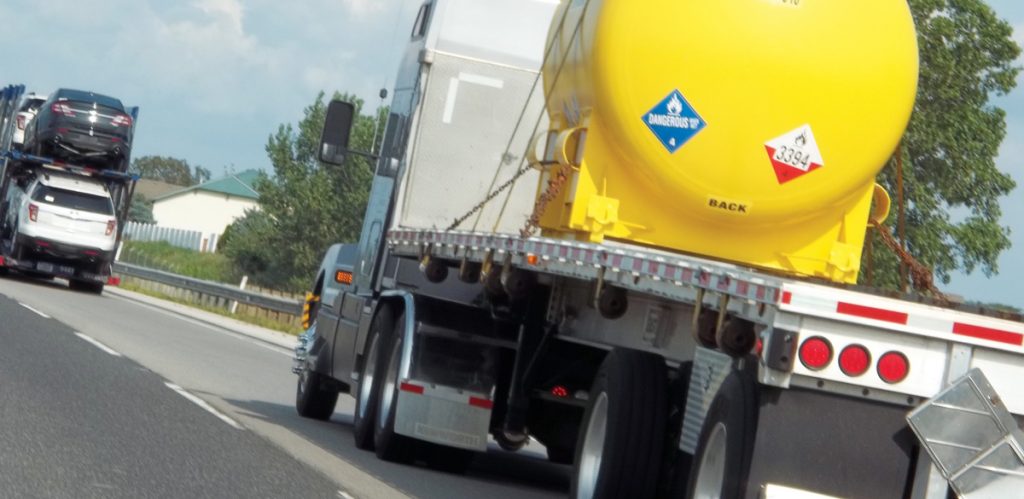When transportation becomes hazardous

GAVIN MYERS explores how some of the leading specialised transporters manage the risky business of moving dangerous and hazardous goods.
With the sheer number of goods classified as dangerous and/or hazardous, running a successful dangerous-goods (DG) or hazardous-chemicals (Hazchem) transport operation is fraught with challenges.
Training, preparation, obligation and compliance, management, accident recovery and (importantly) clean-up all need to be managed with an iron fist. It’s truly a specialised job. So, who better to pose some questions to about the complexities of DG and Hazchem transport than some of the most professional transporters out there – and the industry association that helps to make sure each trip runs smoothly?
What are the most important considerations when transporting dangerous goods?
Deidré Penfold, executive director of the Chemical and Allied Industries’ Association (CAIA), suggests that this is not a simple question to answer – with considerations including the high cost of transporting DG and awareness of the latest technologies to assist in an efficient operation.
“Operators must be knowledgeable on all the legal requirements, or contract a person or company to keep them up to date. They need to ensure they use the correct equipment for the application. For example, it’s not economically viable to transport only one type of chemical in one direction – operators need backhauls and therefore need a tanker that gives them the option to transport different chemicals,” she says.
Accreditation is not negotiable. “To be an approved DG transporter for most of the big chemical manufactures, Safety and Quality Assessment for Sustainability (SQAS) Africa accreditation is a pre-requisite. For specific chemicals, additional audits need to be undertaken, which comes with additional cost,” she adds.
Patrick Pols, MD, and Pierre Scharneck, operations director, of OneLogix United Bulk, suggest that the safety of the public, the operator’s staff, the load and equipment, underlies all other considerations. “This is managed by good training of all staff in the handling of the product, the handling of the equipment involved and any critical factors such as fatigue management and proper preventative maintenance programmes,” they note.
Andre Jansen van Vuuren, director: marketing, at Cargo Carriers, cites four main considerations: Clearly marked Hazchem labels and Transport Emergency (TREM) cards must be on display for authorities to identify the product being transported; drivers must be properly trained and have product knowledge; vehicles must be roadworthy; and emergency response must be quick to contain any spills.
How does vehicle preparation/maintenance differ from run of the mill transport?
“Maintenance and preventive maintenance is of utmost importance when transporting DG. It may be expensive, but the clean-up operation for one leaking tanker can cost millions,” says Penfold, adding that pre-trip inspections are a legal requirement and have to be undertaken on a daily basis.
Pols and Scharneck agree that preventative maintenance, especially of the tankers, adds to the magnitude of the challenge. “There are no shortcuts!” they comment. “You need to do what you plan to do right the first time. Mistakes create serious risks to people and the environment. With the transportation of hazardous goods, nothing can be left to chance and no risks can be taken.”
Similarly, how does driver training/preparedness differ?
Jansen van Vuuren explains that the drivers at Cargo Carriers are bound to a rigorous employment and training process. “Prior to employment we conduct criminal and licence verification checks. Our drivers need to have four years of tanker experience; exhibit competency on the road, when alley docking and in straight-line reversing; and have a medical check-up (which is repeated each year).
“Even then, prior to the driver being given the truck to drive alone, he or she will be driving with a more experienced driver to become familiar with our routes, customers and the different products we transport.”
Penfold reminds us that DG drivers require a PrDP-D permit which can only be obtained after the age of 25 years. “To keep their PrDP-D, a one-day course on the Conveyance of DG by road needs to be undertaken on an annual basis. Drivers need to be trained annually in several subjects,” she comments.
Basic firefighting and roll-over mitigation are just two examples of training provided for the drivers at Cargo Carriers and OneLogix.
Pols and Scharneck comment that driver selection is very important. “The driver must be strong enough and disciplined enough to handle the responsibility of the rig, as well as the cargo being transported. It is not the ideal place to gain experience, therefore only experienced drivers with the correct temperament and character can be appointed.”
What are the obligations on the part of the consignor and consignee?
Moving dangerous goods does not start and end with the transporter – the consignor and consignee also have legal obligations to fulfil.
“The consignor needs to classify the product correctly and use the correct packaging. The loading of DG by the consignor must be done by a qualified person. The consignor needs to issue the TREM card as well as the Dangerous Goods Declaration,” Penfold comments.
Jansen van Vuuren adds that the consignee is responsible for the offloading of the dangerous goods, and must provide a qualified person to do so.
Pols and Scharneck comment that it’s probably worth going a little further. “Over and above the legal requirements of the consignor, we try to get our customers to become partners in what we do and how we do it. If they are not the consignors, then they must influence their suppliers to handle the product in the correct way.
“We know our systems and equipment best and the same applies to the consignor. It is, however, a negotiation of how it is handled and it varies depending on the equipment used. Other than overloading, the most important part is the wearing of protective clothing and equipment by all parties involved in the processes,” they comment.

Are subcontractors and owner-drivers commonplace in DG/Hazchem transport? How does this complicate the process and what is the best way to manage them?
While both Cargo Carriers and OneLogix United Bulk strictly avoid using subcontractors or owner-drivers, there are some DG and Hazchem hauliers that do use them. Many large companies, such as Sasol, do not allow subcontracting. Some do with permission.
Penfold explains that using subcontractors is an onerous process and is not encouraged by the CAIA. “Subcontractors or owner-drivers need to be of the same standard as the main contractor, who remains the responsible party and will be liable for any incidents caused by their subcontractors.
“Continuous communication and training need to be in place. The main contractor needs to ensure that the subcontractors adhere to the correct requirements, so they need to be audited. The best option is for the main contractor to take care of the subcontractor’s drivers and equipment as if they belong to them, and ensure that the drivers are trained and the equipment is serviced as prescribed,” she suggests.
With the sheer number of products classed as DG/Hazchem, how can a transport company best stay on top of the relevant regulations/legislation?
Penfold says that it is of utmost importance to ensure that transport companies keep abreast of all changes to the Road Traffic Act, The Occupational Health and Safety Act, the Labour Act and all applicable South African National Standards (SANS) codes.
“Employing a company or consultant, attending industry workshops and becoming a member of industry organisations (such as CAIA) are among the options,” she points out.
Pols and Scharneck explain that, at OneLogix, it is up to the company’s safety, health, environment, risk and quality (SHERQ) and depot managers to stay on top of current legislation.
“All products have handling instructions that are unique to them and this does not easily change for a specific product. The safety data sheet (SDS) of a product accompanies each load and all drivers are specifically trained and briefed before loading a product for the first time. Extreme care is given to this and a lot of attention is given to SHERQ in our business. It is enforced very strictly as we cannot achieve less than 99 percent.
“All incidents, no matter how small or insignificant, are treated equally and investigated thoroughly. After every such incident or near-miss, re-training is done on an individual basis, or through toolbox talks to the entire driver contingent, so as to ensure it is prevented from happening again,” they explain.
Does the cross-border transportation of dangerous goods differ from that locally? What are the key differentiators?
Running goods across the border is a challenge for most South African operators – but even more so when it comes to DG or Hazchem. According to Pols and Scharneck, the environment and infrastructure are the main reasons for this: “Roads in most of the neighbouring countries, especially to the north, are not in the best shape. In addition, there is also often tampering with the vehicles to determine the contents.”
Finding reliable help, whether technical or emergency, can also be a challenge. “We are usually reliant on South African-based operators for spill control and containment, or the local operators that have very limited equipment and charge cash (payment in United States dollars). By the time the South African-based operations arrive, the damage has been done and the cost of recovery and environmental protection is huge. There is reliable local help, but it is difficult to come by,” they note.
Penfold agrees that the limited emergency service is an important difference when going across the border. She also adds that local knowledge is essential.
“The operator must know all the requirements of the different countries. Paperwork is very important,” she says.
Jansen van Vuuren adds that vehicles carrying explosives, for example, may be registered as a Hazchem vehicle in South Africa, but will require an explosive permit across the border.
What’s the best advice for operators new to DG/Hazchem transport?
“There are severe barriers to entry due to the nature and risk of the products transported. However this still does not deter some companies from using start-ups in the industry and at great risk.
“A start-up just does not have the economies of scale to invest in all the safety requirements and preventative management programmes to ensure a smooth-running operation. This is where the consignors or suppliers of the product expose themselves to huge risk,” comment Pols and Scharneck.
For a prospective entrant into this specialised field of transport, Penfold probably sums it up best: “You need to be passionate about transport!”
Published by
Focus on Transport
focusmagsa




